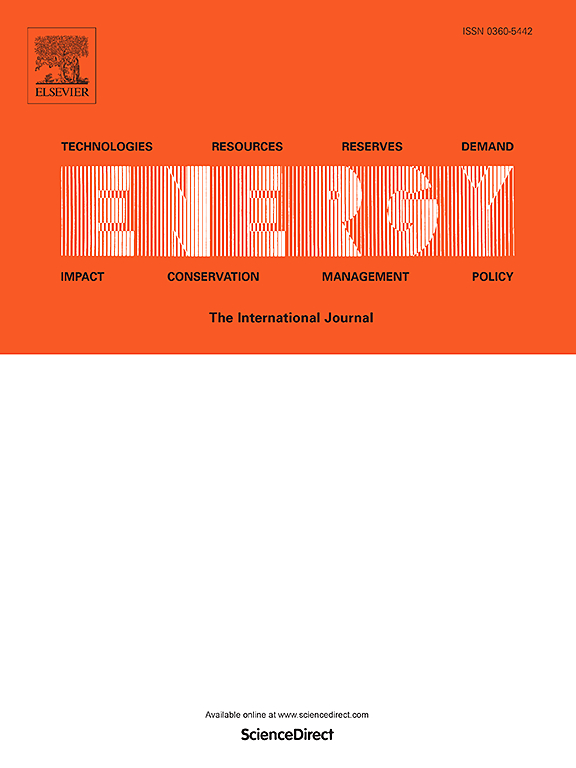The end-to-end smart lifetime prediction method for flexible thermal power plants: A case study on main steam pipe
IF 9
1区 工程技术
Q1 ENERGY & FUELS
引用次数: 0
Abstract
As thermal power plants have transformed in power grids from being the primary power source to being regulatory power source, deep and rapid load changes have become the norm. This frequently subjects thick-walled components under high temperature, such as boiler main steam pipes, to additional creep lifetime damage, posing security issues that cannot be ignored. Therefore, real-time monitoring of creep lifetime during operating conditions has become crucial. Since creep prediction for main steam pipes involves microscopic-scale calculations and is challenging to implement online, this paper proposes an online lifetime prediction method for main steam pipes that combines mechanism-based and data-driven modeling. Firstly, a finite element method is used to establish a mechanism-based model for pipe creep life. Secondly, a rapid creep lifetime deep learning prediction model based on stress prediction is introduced, where training data is generated from the mechanism-based model. This achieves an end-to-end intelligent prediction from operational data to real-time creep lifetime variations. The proposed method yields a root mean square error of 2.5 × 10−7 and an R-squared score of 0.925 on the test set, demonstrating good prediction accuracy.
柔性火电厂端到端智能寿命预测方法——以主蒸汽管道为例
随着火电厂在电网中由主力电源向调节性电源的转变,负荷的深度、快速变化已成为常态。这经常使高温下的厚壁部件(如锅炉主蒸汽管道)遭受额外的蠕变寿命损坏,带来不可忽视的安全问题。因此,运行工况下蠕变寿命的实时监测变得至关重要。针对主蒸汽管道蠕变预测涉及微观尺度计算,难以在线实现的特点,本文提出了一种基于机理和数据驱动建模相结合的主蒸汽管道寿命在线预测方法。首先,采用有限元法建立了基于力学的管道蠕变寿命模型。其次,介绍了一种基于应力预测的快速蠕变寿命深度学习预测模型,其中训练数据由基于机制的模型生成。这实现了从运行数据到实时蠕变寿命变化的端到端智能预测。该方法在测试集上的均方根误差为2.5 × 10−7,r平方分数为0.925,具有较好的预测精度。
本文章由计算机程序翻译,如有差异,请以英文原文为准。
求助全文
约1分钟内获得全文
求助全文
来源期刊

Energy
工程技术-能源与燃料
CiteScore
15.30
自引率
14.40%
发文量
0
审稿时长
14.2 weeks
期刊介绍:
Energy is a multidisciplinary, international journal that publishes research and analysis in the field of energy engineering. Our aim is to become a leading peer-reviewed platform and a trusted source of information for energy-related topics.
The journal covers a range of areas including mechanical engineering, thermal sciences, and energy analysis. We are particularly interested in research on energy modelling, prediction, integrated energy systems, planning, and management.
Additionally, we welcome papers on energy conservation, efficiency, biomass and bioenergy, renewable energy, electricity supply and demand, energy storage, buildings, and economic and policy issues. These topics should align with our broader multidisciplinary focus.
 求助内容:
求助内容: 应助结果提醒方式:
应助结果提醒方式:


